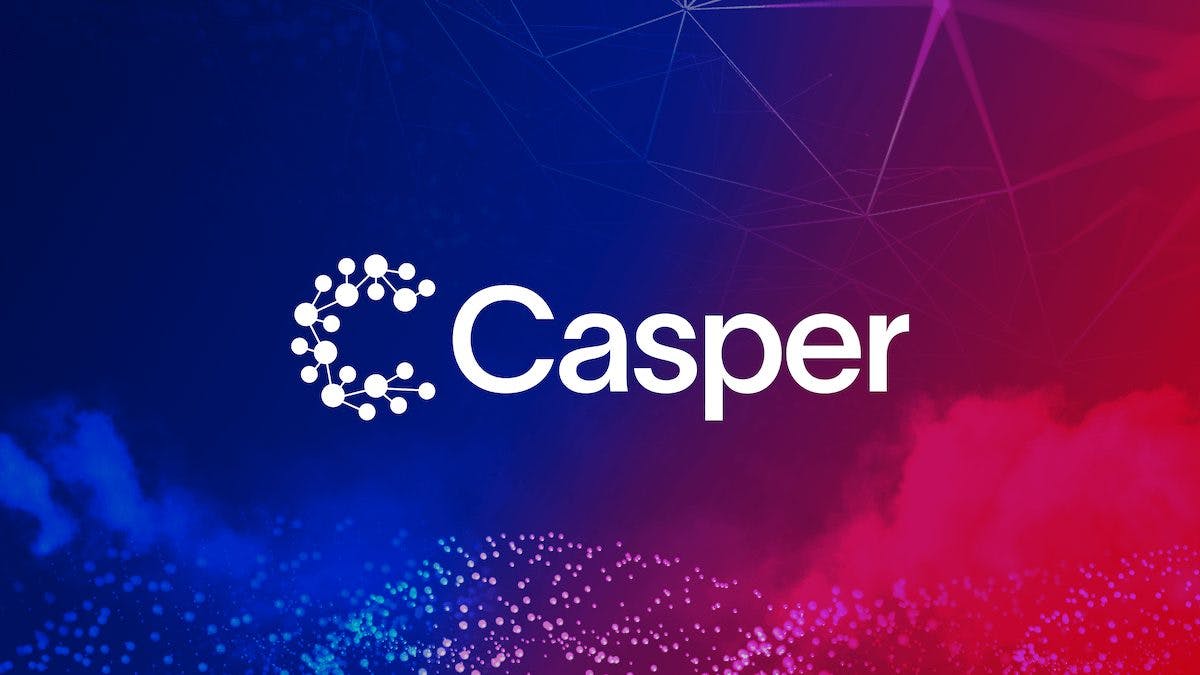Top Strategies to Future-proof Your Career and Business in 2022
Casper Network explains how to future-proof your business or career in an expanding Web3 environment.

- Because a majority of NFTs are on the Ethereum blockchain, they’re subject to energy and cost structures used on Ethereum, like proof-of-work. This makes minting NFTs costly and energy-inefficient.
- “Immutable software is not a reality…software is never truly finished. The future is still unwritten, but your history is immutable.”
The future’s here, and it’s pronounced “Web3.” In a world becoming increasingly open-sourced, borderless and immutable, forward-thinking individuals and companies are abandoning centralized, siloed “Web2” protocols for more interoperability on the blockchain. With technology evolving faster than ever, the companies and developers who adapt to this new reality can “future-proof” themselves.
“Blockchain” and “simplicity” are not mutually exclusive
The team at Casper has taken the lead on enterprise-grade Web3 development. Working with blockchain databases and proof-of-stake architectures provides a unique perspective that offers curious newcomers entry to this new era of technological innovation.
Here are some of the team’s top strategies to future-proof your career or your business in 2022.
1. Get Educated by Professionals
Want to gamble with your developer career? Pigeon-hole yourself into one ecosystem. You might pick a needle out of a haystack — but you might not. For a more pragmatic approach, consider a Web3 ecosystem. And since the blockchains that survive mass adoption will be interoperable, it only makes sense to join a Web3 ecosystem that can interface with other chains.
According to Casper CTO Medha Parlikar:
“For developers thinking that blockchain isn’t for them, because they don’t want to do DeFi, or don’t want to run nodes, that’s okay. Casper protocol doesn’t require that. You can build software with blockchain the way you’ve always done it. It’s not out of your grasp. Our protocol is a really easy stepping stone for you to get started… Web3 is the future of tech, and WebAssembly is an emerging standard. Recognizing this is key to future-proofing your career.”
With WebAssembly smart contracts running on the blockchain, learning the simple code format bridges your Web2 background to the Web3 standard, making developers not only attractive and employable, but powerful agents of change in an industry that depends on its ability to innovate. And with expertise in a new code standard that’s only been around for a few years, you can add a unique feather to your developer cap.
There’s a common misconception that keeps some aspiring developers at bay: Blockchain’s immutability inhibits flexibility and limits the scope of development. According to Parlikar, that’s a feature, not a bug: “Immutable software is not a reality…software is never truly finished. The future is still unwritten, but your history is immutable. That’s what we’re protecting. Tech always needs the ability to pivot, and blockchain can protect your history while allowing flexibility. ”
2. Implement Enterprise-Grade Web3 Development
Contrary to media headlines, Web3 isn’t just for twenty-somethings who want to trade memecoins and mint animated NFTs. And it’s not just for developers, but entrepreneurs as well. The reason? Smart contracts.
These self-sufficient programs execute outcomes on the blockchain when predetermined conditions are met. They bring slow, manual/analog business processes online in a decentralized way, and offer business owners the flexibility to adapt their business models, adjust for market trends, and more.
This new and exciting tech might seem intimidating to some. Web3, after all, is inverting both tech and financial power structures. But that doesn’t mean you need to nuke your existing business model and start from scratch. The blockchain makes your past immutable while allowing you to build for the future.
Parlikar added, “We see blockchain not as something to tear out and replace, but as a value-add for data in your enterprise that will benefit from the security protocols on blockchains.
Businesses need guarantees that they’ll be able to pivot, because the future is unwritten.”
3. Go Green
Two of crypto’s biggest stories of 2021 were the rise of NFTs and the environmental impact of crypto. And while Web3 ecosystems are lightyears ahead of their Web2 predecessors, there’s always room for improvement, starting with NFTs themselves.
Since a majority of NFTs are on the Ethereum blockchain, they’re subject to energy and cost structures used on Ethereum, like Proof of Work (PoW). This makes minting NFTs costly and energy-inefficient. While Ethereum’s network-wide “merge” to a more sustainable Proof of Stake (PoS) consensus mechanism is anticipated by 2023, that doesn’t help now.
For a more sustainable, longer-term approach, consider “green NFTs,” NFTs minted on less energy-intensive works with smaller economic footprints. Casper has already implemented a PoS system which is faster, cheaper, and more energy-efficient, and can meet all of your blockchain needs in a way that is consistent with a trend toward a net-zero green future.
The future is decentralized and green
Future-proofing your career, enterprise-grade development and a greener tech framework: These are just a few ways to prepare for a new Web3 world, according to Casper.
Over the next few years, it will become clear who’s looking forward, and who’s stuck in the past.
Learn how to start building on Casper or how they can help your business stay ahead of the times at Casper Network.






